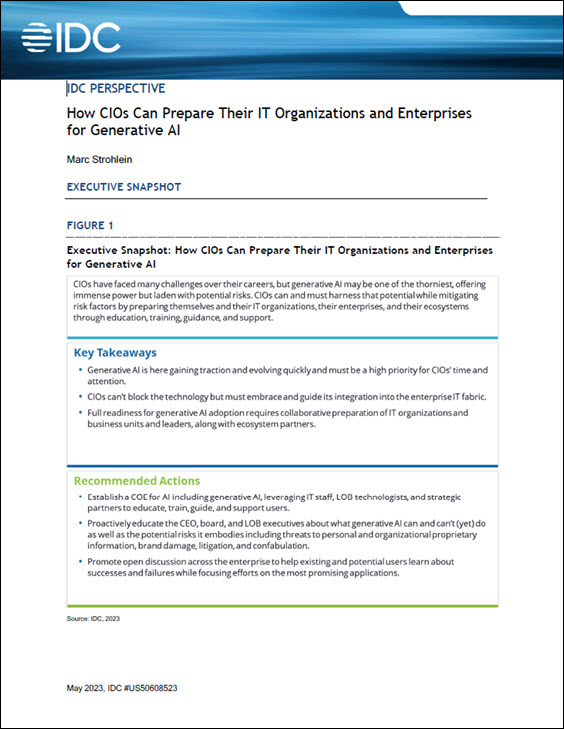 In this special guest feature, Rebecca Scully, marketing manager at Dato, discusses how data growth lays the foundation for machine learning to power intelligent applications that adapt to your needs and squeeze insight, revenue and value from data. Rebecca is marketing manager at Dato. Rebecca’s interest in marketing grew out of her background as a professional musician. She enjoys leveraging her unique background to reach people with innovative communications and inspirational experiences. She has worked for both non-profits and startups and is inspired by art and technology.
In this special guest feature, Rebecca Scully, marketing manager at Dato, discusses how data growth lays the foundation for machine learning to power intelligent applications that adapt to your needs and squeeze insight, revenue and value from data. Rebecca is marketing manager at Dato. Rebecca’s interest in marketing grew out of her background as a professional musician. She enjoys leveraging her unique background to reach people with innovative communications and inspirational experiences. She has worked for both non-profits and startups and is inspired by art and technology.
The world creates 2.5 petabytes of data per day but the information is a burden unless its value is unlocked. Data storage and compute cycles aren’t free. Growth in file based storage has been estimated to around 150%1 year over year over the past four years and the cost for the privilege of holding onto and occasionally processing data varies significantly depending on the time you expect to store it and how often the data will be accessed with complicated models pointing to hybrid clouds as the optimal solution.
The good news is that data growth lays the foundation for machine learning to power intelligent applications that adapt to your needs and squeeze insight, revenue and value from data. Machine learning powers predictions applications depend on to deliver experiences customers value and help managers make better informed business decisions.
Machine learning is often used to create “recommenders” and personalized experiences at scale. Think about search engines, e-commerce sites and streaming services that suggest search terms, products or music, for example. Similarly, personalized cart completion features reduce friction in the purchasing process. This deeper understanding of each customer helps business deliver value on every interaction. Netflix recently estimated the value of their recommenders and personalization efforts at $1 billion per year by quadrupling their effective catalog and dramatically increasing the take rate for video recommendations, increasing customer engagement and reducing churn.
But not every data set includes product reviews like those of Netflix or Amazon. Without review data, it can be very difficult to segment audiences or recommend products. Machine learning, however, can identify customer groups with graph analytics and label propagation. It can identify product clusters based on text analytics of item descriptions. Additionally, machine learning can power image recognition to identify similar items based on how they look.
And recommenders are just the beginning. Once you get started with machine learning you’ll find other adjacent applications to deliver value out of data. Churn prediction, sentiment analysis, lead scoring and fraud detection are popular applications of machine learning.
Getting started is easy. Data scientists and application developers have myriad new tools available to accelerate the development of machine learning capabilities. To pick a vendor look for toolkits that balance ease of implementation with control. Not every data scientist or application developer has the time to trial-and-error a machine learning solution to completion. But conversely most application developers don’t want to give up control with black box solutions or APIs that send application data off to a third party server.
We’re entering the era of intelligent applications that adapt to users specific interests and needs. In the next 3 to 6 years users will expect all applications to anticipate their needs. Leaders will drive business innovation with data driven machine learning, and continue to expand their applications intelligence to defend their market position. Machine learning is the way you can transform your big data costs into intelligent application revenues.
1 IDC Worldwide File Based Storage 2011 – 2015 Forecast: Foundation Solutions for Content Delivery, Archiving and Big Data
Sign up for the free insideAI News newsletter.



